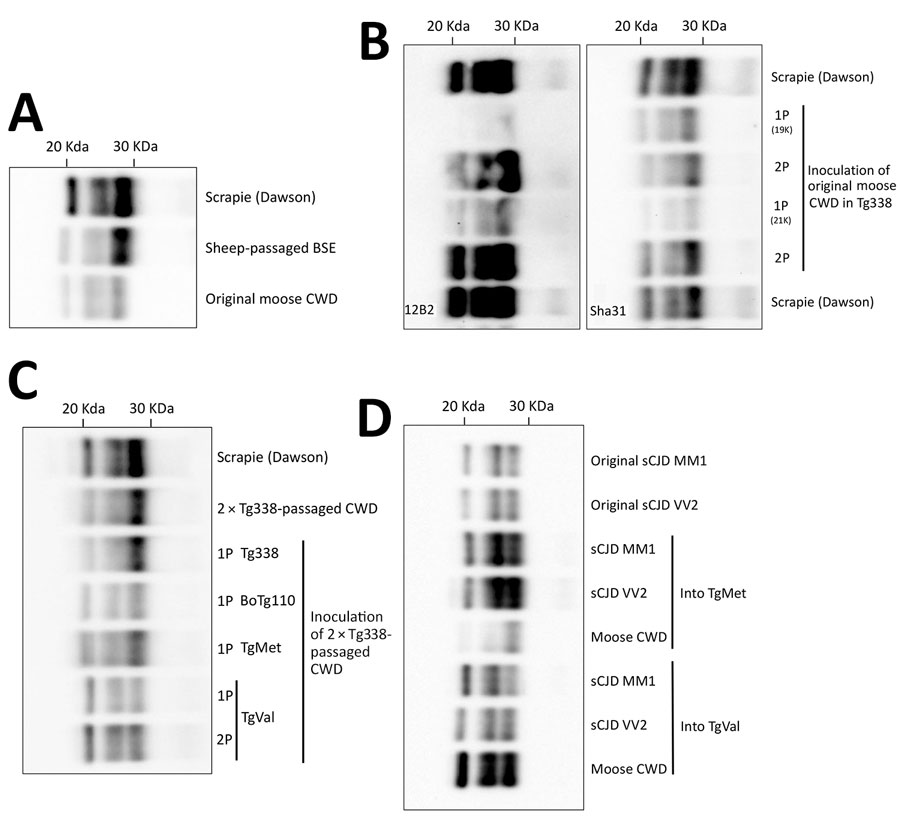Volume 30, Number 12—December 2024
Research Letter
Zoonotic Potential of Chronic Wasting Disease after Adaptation in Intermediate Species
Figure

Figure. Western blot analysis in a study of zoonotic potential of chronic wasting disease after adaptation in intermediate species. Results show PK-resistant PrP (PrPres) banding patterns of a moose CWD isolate from Europe after transmission to transgenic PrP models. A) Original 16–60-P153 CWD isolate compared with reference Dawson and sheep-passaged BSE. B) Transmission of the original moose CWD isolate to mice ovine PrPC genotype VRQ (Tg338), resulting in positive transmission with either 19 or 21 kDa PrPres on first passage and 21 kDa PrPres on second passage; PrP Sha31 antibodies (right panel) and PrP 12B2 antibodies (left panel). C) Transmission of Tg338-adapted (second passage) moose CWD isolate to Tg338, BoTg110, TgMet, or TgVal. D) Comparison of PrPres banding patterns in TgMet and TgVal inoculated with the Tg338-adapted moose CWD isolate or with M1CJD and V2CJD reference sCJD strains. Immunodetection was performed by using either the Sha31 antibody to detect the amino acid sequence YEDRYYRE (145–152), or the 12B2 antibody to detect the amino acid sequence WGQGG (89–93). Dawson (a reference 21-kDa scrapie strain) is included on all panels except D for molecular weight reference. 1P, 1st passage; 2P, 2nd passage; BoTg110, bovine PrPC-expressing mice; BSE, bovine spongiform encephalopathy; CJD, Creutzfeldt-Jakob disease; CWD, chronic wasting disease; PK, proteinase K; PrP, prion protein; PrPC, normal prion protein; PrPres, PK-resistant prion protein. TgMet, Tg340 mice expressing methionine; TgVal, Tg361 mice expressing valine.